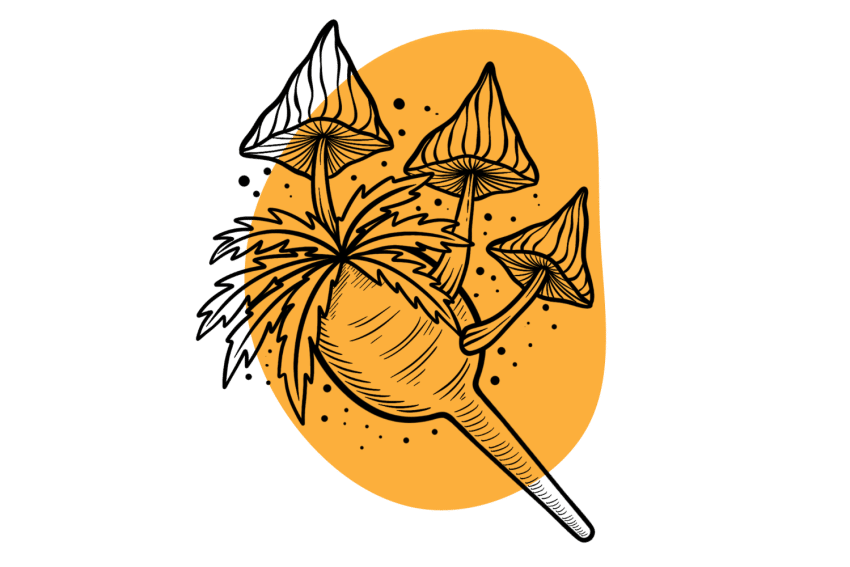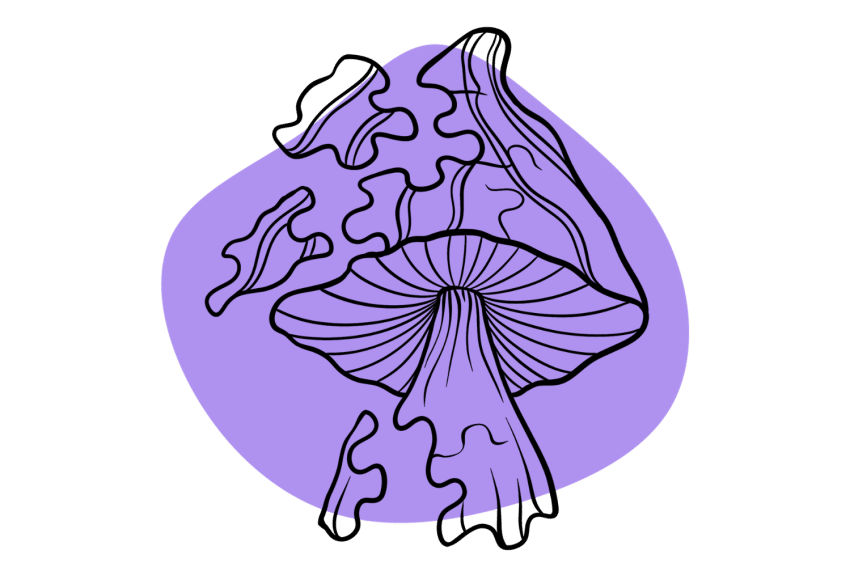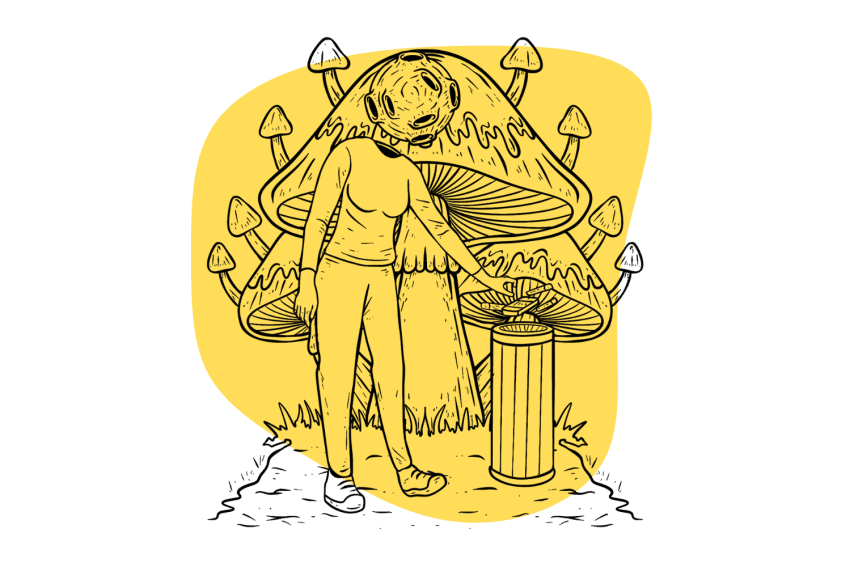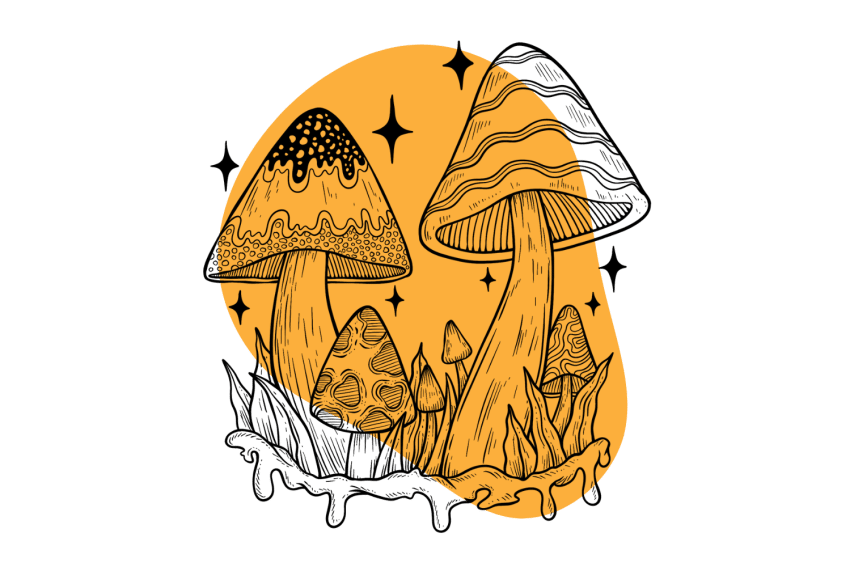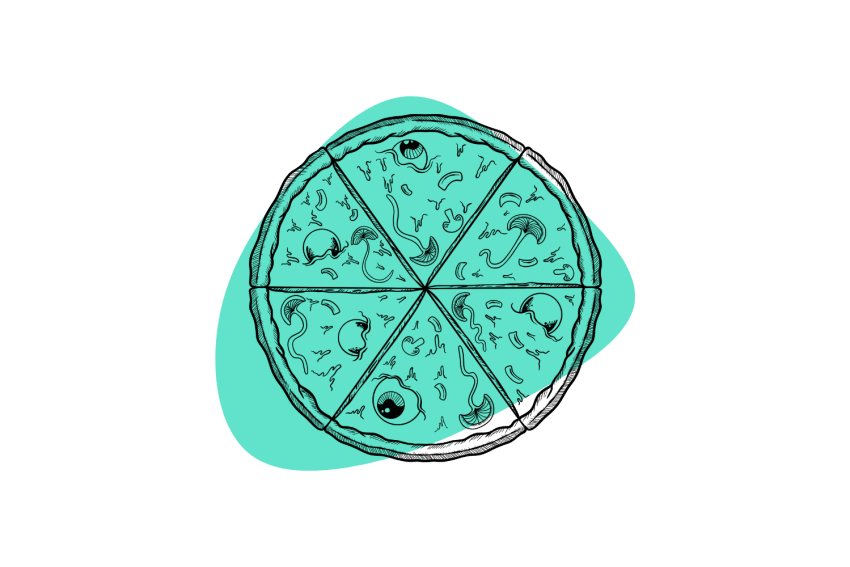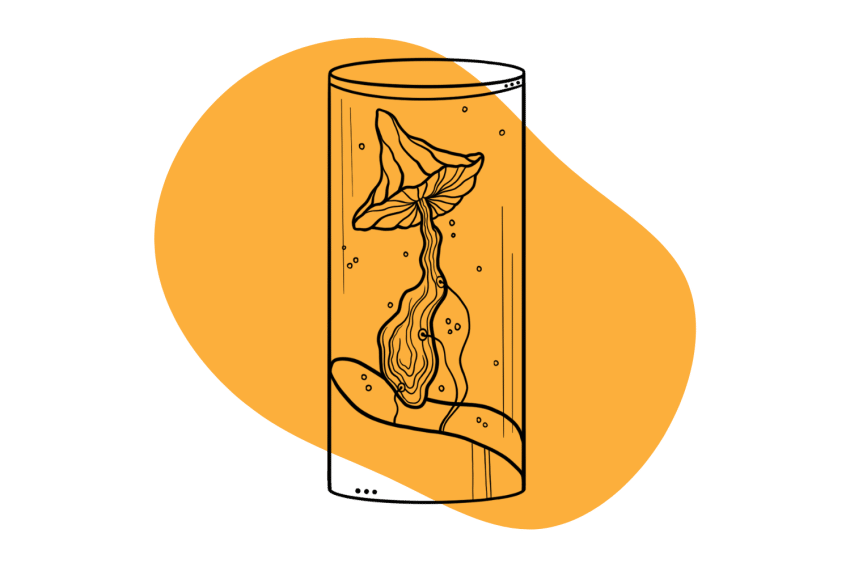How Long Do Dried Mushrooms Last?
If stored properly, your mushrooms should maintain roughly 80% of their potency for around a year.
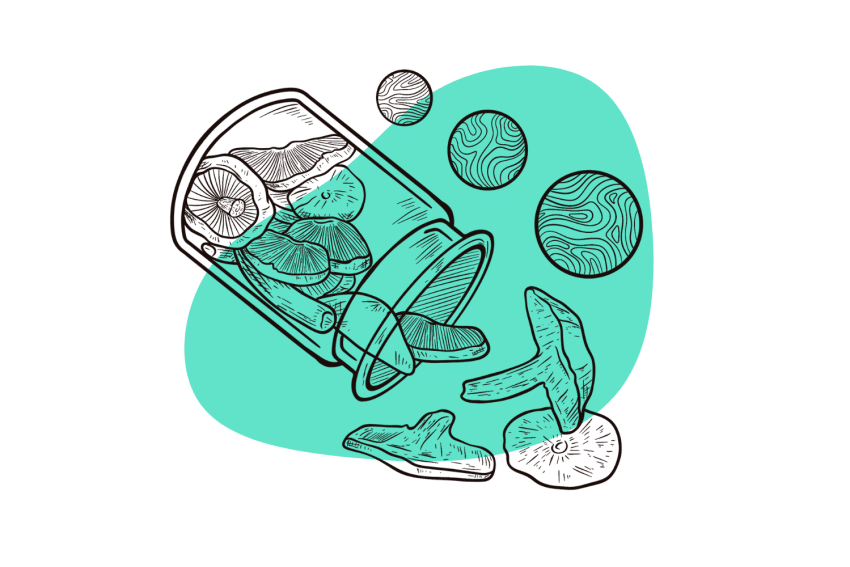
Just because you have some magic mushrooms to spare doesn’t mean you have the time or mental/emotional energy to take them.
Several elements play into the length of time your dried mushrooms might last.
In this article, we’ll cover:
- How To Store Magic Mushrooms
- The Difference Between Dry and Fresh Mushrooms
- How Quickly Magic Mushrooms Degrade
- The Best Way To Dry Magic Mushrooms
- Other Effective Storage Mechanisms
We’ll arm you with all the knowledge you need to ensure you get the most mileage out of your magic.
(Oh, and if you’re here because you’re actually asking how long the psychedelic effects of dried mushrooms last or how long they stay in your system, we’ll touch on those too!)
How Long Until Dried Mushrooms Go Bad?
Magic mushrooms can “go bad” by either losing their potency or by growing mold. While drying mushrooms helps prevent contamination, it doesn’t eliminate the risk altogether.
Like any natural product, your dried mushrooms will start to break down over time; if moisture is in the jar, it may mold and become inedible. Otherwise, it may just leave you with an ineffective jar of sadness.
Under ideal conditions, your mushrooms shouldn’t rot or mold at all, even after several years. If exposed to moisture or air, your shrooms will likely mold and become inedible after just a few weeks or months.
Factors that affect whether your mushrooms will go bad or not:
- How they were grown — manure-grown mushrooms are more likely to become contaminated than things like rye grain or PF Tek.
- How they were dried — if your shrooms contain even a small amount of moisture, they will begin to rot.
- How they were stored — mushrooms last the longest if they are stored in a dark, dry, airtight container and kept in a cool or room-temperature location.
The biggest element is time. Nothing lasts forever — this is a theme that seems to fit with the experience of psilocybin.
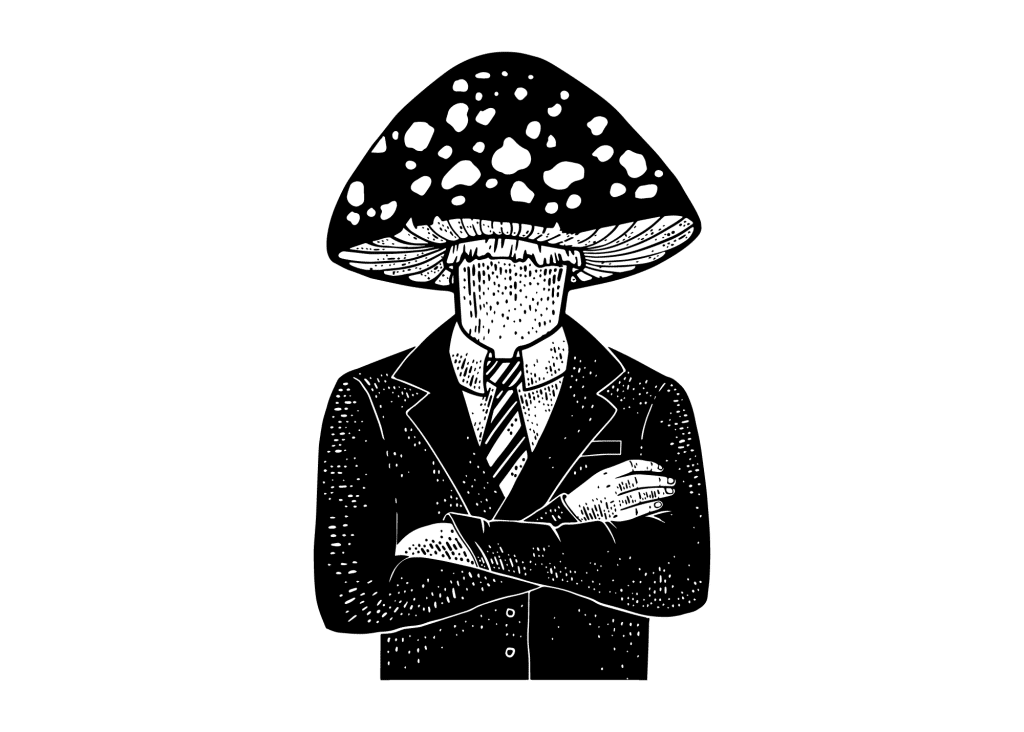
Do Magic Mushrooms Degrade?
If magic mushrooms are grown in adequate conditions, dried appropriately, and stored in an airtight, dark, and cool environment, they may maintain up to 80% of their potency for a year or more.
Degradation is a natural process for any living thing, and mushrooms are no exception. Oxygen, heat, and UV are the biggest factors that cause the active ingredients in your mushrooms to decay.
Right after harvest, magic mushrooms contain high concentrations of psilocin and psilocybin. Psilocin is unstable and will degrade almost entirely by the time the mushrooms are dry. The psilocybin, however, is stable and will last much longer.
Properly storing your dried mushrooms will slow this degradation down — but it can’t stop it completely.
Avoiding Potency Loss When Growing Mushrooms
Harvesting your mushrooms when the time is right (and not a moment later) and choosing mushrooms with high concentrations of psilocybin and psilocin can make a big difference in the potency of your mushrooms after a year of storage.
Magic mushroom species vary dramatically in potency. The average amount of psilocybin in a psilocybin-containing mushroom varies significantly from one species to another.
In general, Psilocybe azurescens is the species with the highest concentration of psilocybin and psilocin. Psilocybe semilanceata, Psilocybe bohemica, and Psilocybe zapetecorum aren’t far behind.
Most mushrooms on the market today are Psilocybe cubensis — which are roughly seventh in terms of potency. They’re the most common, however, because of how easy they are to cultivate.
Sometimes there are reports that break the norms, though — for example, one study collected samples from the Pacific Northwest of various psilocybin-producing mushrooms and found a Psilocybe baeocystis — a species with typically low levels — to be the highest-producing mushroom [3].
Regardless of which species you choose, it’s important to remove your mushrooms from the substrate with as little force as possible to avoid bruising — which refers to a bluish color that develops when the mushrooms are damaged. When the cells are damaged, psilocin is exposed to oxygen — which oxidizes and degrades the psilocin into inactive chemicals [4].
Waiting too long after the mushrooms are “ripe” can also cause psilocin and psilocybin to begin breaking down early.
For mushrooms found outside, research indicates it’s best to harvest after the sun goes down as the ultraviolet rays can potentiate the damage of removing the mushrooms [5].
How Psilocybin Degrades in Different Storage Conditions
The best storage conditions for dried magic mushrooms are somewhere out of direct sunlight in an airtight container.
Any UV light, oxygen, mold or bacterial growth, fluctuations in temperature, or humidity will cause your mushrooms to lose potency sooner.
Other techniques can preserve your shrooms even longer — such as making blue honey.
A study reviewed the effects of storing fresh and dried mushrooms in 5 different conditions and found the best way is in the dark at room temperature.
The study involved testing mushrooms stored under different conditions over a 15-month timespan [1]. The starting potency of the mushrooms was 1.5% psilocybin.
- In light at Room Temperature (68ºF) — Within one week, psilocybin content dropped to 0.96%. After a month, it lowered to 0.72% and then 0.67% and 0.45% at the 2-month and 15-month follow-up, respectively.
- Dark Conditions at Room Temperature (68ºF) — Concentrations lowered to just 1.3% at the one-week mark and stayed at ~82% by the 2-month mark. At the conclusion, it still maintained a slight lead over the others with 0.477%.
- Refrigerated (~40ºF) — Refrigerated samples were down to 1.2% after a week and varied from 0.85–0.817% between the one-month and two-month follow-up. After 15 months, psilocybin content was around 0.45%.
- Frozen (-4 ºF) — The lower the temperature goes, the worse the storage solution seems to be. The one-week, one-month, two-month, and 15-month follow-ups for this one were 1.01%, 0.78%, 0.72%, and 0.45%. While performing marginally better than the fridge option at later check-ups, it performed very poorly on the onset before degradation appears to have slowed.
- Frozen (-112 ºF) — Magic mushrooms aren’t that ground turkey you haven’t worked up the courage to cook yet; freezing is the worst way to store your shrooms over time. The immediate loss is still better than you’d expect from storing them in direct sunlight, but not by much, and the losses between the two are very comparable.
Samples were relatively the same at the 15-month mark, but the rapidness of degradation was wildly different among different options.
Avoiding Loss of Potency When Drying Mushrooms
When drying your mushrooms, you can take preventative measures to prevent a dramatic loss of potency.
Going from fresh to dried mushrooms will inherently involve some of the potency slipping off, but ensuring they dry quickly in a dark area with plenty of airflow is best.
Some of the ways people commonly wind up reducing the potency of their mushrooms while drying them include:
- Exposure to Direct Sunlight — As we’ve mentioned above, UV light WILL reduce the potency of your mushrooms, so it’s best if they’re dried in a dark area.
- Too Much/Too Little Heat — Don’t expect to dry your mushrooms quickly in the oven or throw them in the freezer and dry them out later. Extreme heat on either side can greatly affect potency.
- Drying Mushrooms in Too Humid of an Environment — If you keep a humid home or live in a damp area, it may take longer for your mushrooms to dry, opening them up to contamination. It’s best to dry your mushrooms quickly and store them away from an open-air environment.
- (Potentially) Cutting Mushrooms Before Drying — While research is inconclusive, some studies suggest cutting your mushrooms into smaller pieces may damage their potency. Increasing the surface area exposed to air will inherently enhance the degradation of your magic mushroom’s alkaloids. Big mushrooms, however, take longer to dry, and it’s likely better to minimally cut them in quick, clean sections.
- Powdering Mushrooms After Drying Them — Turning dried mushrooms into powder is a good idea if you intend to consume them relatively quickly, but it may be a mistake if you need some time in storage. This option opens your mushroom up to the most surface area for air out of the other possibilities and is, therefore, the riskiest for degradation.
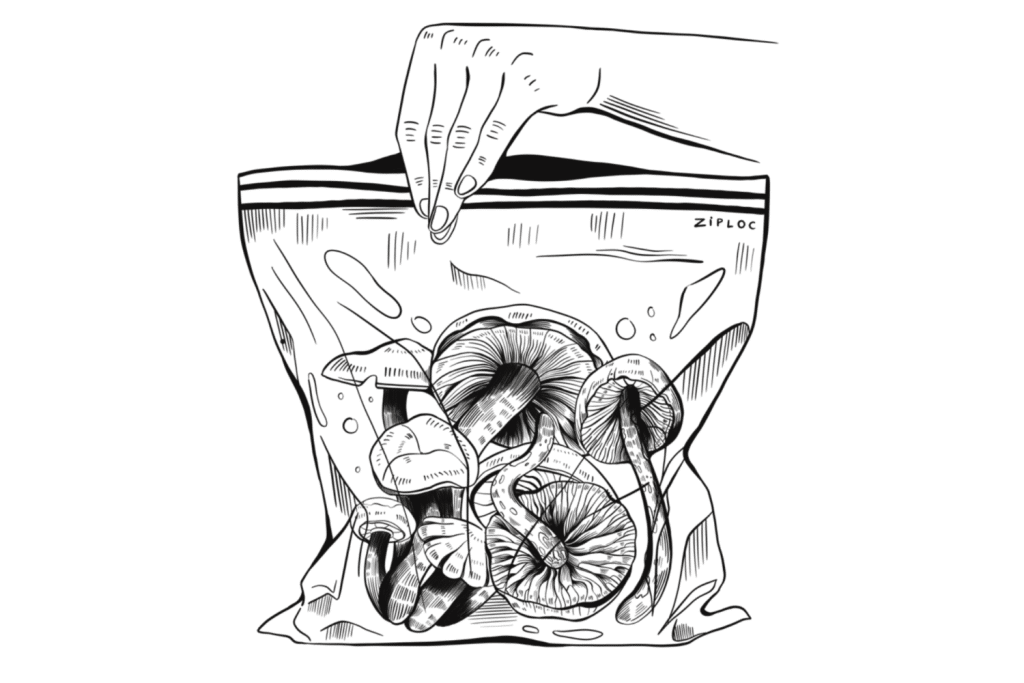
Alternative Drying/Storage Options For Magic Mushrooms
Some options you may want to consider if you’re planning to store your mushrooms a bit longer (and are willing to buy some equipment) include:
- Using a Food Dehydrator — If you have access to a reliable food dehydrator, this is one of the best ways to quickly dry your mushrooms under a reliable temperature. Just make sure you don’t exceed 95ºF to avoid burning off psilocybin with excessive heat.
- Flash Freezing Your Mushrooms — Flash-freezing mushrooms is becoming a popular way to maintain mushrooms for longer and remove even more moisture. By freezing your mushrooms in a vacuum-sealed container with a fan to remove ice build-up, you can maintain the shape and structure of your mushrooms and avoid heat and air.
- Storing Mushrooms in Honey — Preserve your mushrooms in honey (AKA “Blue Honey“) as humans have been doing for centuries. Simply grind your dried mushrooms up and add them to a jar of runny honey and wait around two weeks before straining or keeping the mushroom bits in your honey and dosing it out. The honey helps prevent contamination and extends the shelf life tremendously (perhaps even indefinitely).
- Creating Mushroom Edibles — Mushrooms on their own don’t stand up well to the powers of time, but within a product, they may last longer. Consider turning your mushrooms into a recipe you can section out and freeze to use over time.
Of course, most people simply air-dry their mushrooms which is a perfectly acceptable method on its own.
How Long Do the Effects of Dried Shrooms Last?
The duration of your experience with magic mushrooms will largely depend on your dosage and, to a lesser extent, other metabolic and dietary factors.
For an average person/dosage of magic mushrooms, you can expect the experience to last anywhere from around 4–6 hours with a potential “afterglow” effect for up to 24 hours.
Fresh mushrooms last slightly longer than dried mushrooms simply because they contain a higher concentration of psilocin, which degrades during the drying process.
If you’re unsure about dosage or how long you should expect to feel the effects of magic mushrooms, check out our article on the topic: Going On a Trip? Here’s How to Prepare for Magic Mushrooms.
How Long Do Dried Mushrooms Last in Your System?
While we can’t encourage anyone to ignore the limitations of drug screening in their life with certainty, most psychedelics won’t show up on a drug test after about 24 hours.
However, it can THEORETICALLY still pop up on a drug test up to 7 days later in some individuals.
Factors that can cause psilocybin to show up on a test beyond the usual 24-hour period include:
- Liver disease — slow liver metabolism can leave psilocybin lingering in the system for much longer than expected.
- Certain medications — some medications interfere with the metabolism of psilocybin, slowing down their elimination.
- Urinary tract disease — slow elimination of urine could allow psilocybin metabolites to remain in the system longer than expected.
- Hair and nail testing — these forms of testing aren’t very reliable, but could technically show the presence of psilocybin up to 90 days after taking it.
If you’re curious and want to know more about this, check out our article on the topic: Do Shrooms Show Up On a Drug Test?
References
- Gotvaldová, K., Hájková, K., Borovička, J., Jurok, R., Cihlářová, P., & Kuchař, M. (2021). Stability of psilocybin and its four analogs in the biomass of the psychotropic mushroom Psilocybe cubensis. Drug Testing and Analysis, 13(2), 439–446. https://doi.org/10.1002/dta.2950
- Lee, H.-M., & Roth, B. L. (2012). Hallucinogen actions on human brain revealed. Proceedings of the National Academy of Sciences of the United States of America, 109(6), 1820–1821. https://doi.org/10.1073/pnas.1121358109
- Beug, M. W., & Bigwood, J. (1982). Psilocybin and psilocin levels in twenty species from seven genera of wild mushrooms in the Pacific Northwest, U.S.A. Journal of Ethnopharmacology, 5(3), 271–285. https://doi.org/10.1016/0378-8741(82)90013-7
- Lenz, C., Wick, J., Braga, D., García‐Altares, M., Lackner, G., Hertweck, C., Gressler, M., & Hoffmeister, D. (2020). Injury‐Triggered Blueing Reactions of Psilocybe “Magic” Mushrooms. Angewandte Chemie (International Ed. in English), 59(4), 1450–1454. https://doi.org/10.1002/anie.201910175
- Rafati, H., Riahi, H., & Mohammadi, A. (2009). Enhancement of Indole Alkaloids Produced by Psilocybe cubensis (Earle) Singer (Agaricomycetideae) in Controlled Harvesting Light Conditions. International Journal of Medicinal Mushrooms — Int J Med Mushrooms, 11, 419–426. https://doi.org/10.1615/IntJMedMushr.v11.i4.80

